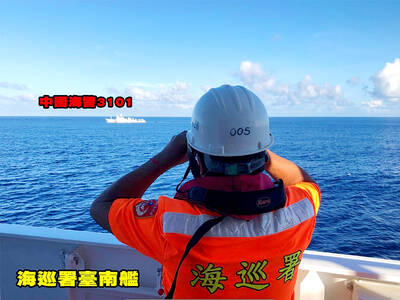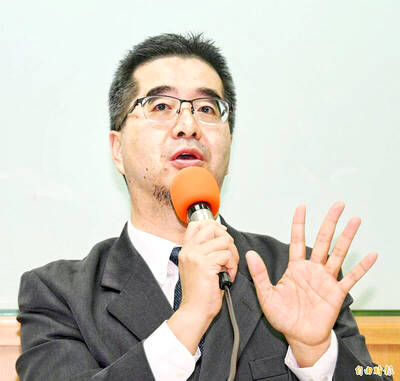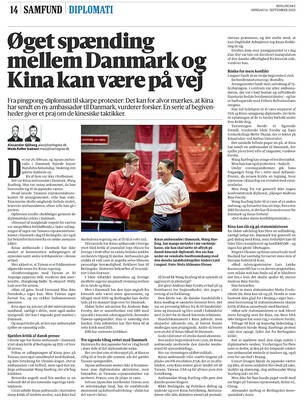The Centers for Disease Control (CDC) yesterday said it has raised the travel advisory for the Philippines to level 1 “watch” for malaria, as a man who arrived from the Philippines was confirmed to have contracted malaria from the parasite Plasmodium knowlesi, marking the second case recorded in Taiwan.
CDC Deputy Director-General and spokesman Philip Lo (羅一鈞) said the case is a foreign national in his 30s, who traveled to Palawan in the Philippines early last month.
The man did not take malaria prevention drugs before and during his visit, and stated that he had been bitten by mosquitoes during an eco-tour on the island, Lo said.

Photo: Shutterstock
Lo said the man developed a fever, headache, muscle ache, brown urine and lethargy from June 19 while abroad, and after returning to Taiwan, he sought treatment on Wednesday last week, as the symptoms continued.
The man again sought treatment on Friday last week for difficulty breathing, dizziness and low urine output, Lo said, adding that the case was reported for testing and the test result confirmed he was infected by P. knowlesi.
He was hospitalized and the local health department is following up on his health condition, Lo said.
Malaria is caused by parasites of the genus Plasmodium, and five species can infect humans and cause illness, including: P. falciparum, P. malariae, P. vivax, P. ovale and P. knowlesi. They are transmitted to humans through the bite of infected mosquitoes, the CDC said.
The typical onset of malaria symptoms is within seven to 30 days after being bitten by an infected mosquito, and early symptoms are similar to the flu, including fever, headache, muscle aches, joint aches, nausea, vomiting and fatigue, it said.
Malaria, if left untreated, can lead to severe illness, including developing a cycle of chills, fever and sweating, and even progress to splenomegaly (enlarged spleen), jaundice, shock, liver and kidney failure, pulmonary edema, acute neurological complications, loss of consciousness and death, the CDC said.
The new case marks the second malaria case infected with P. knowlesi ever recorded in Taiwan, Lo said, adding that the previous case was reported in 2005, a Taiwanese man in his 60s who also traveled to Palawan for eco-tourism.
P. knowlesi is primarily a parasite infecting macaque monkeys — long-tailed macaque and pigtail macaque — in Southeast Asia, but it can also be transmitted to humans through the bites of infected mosquitoes, he said.
Since 2004, human cases of P. knowlesi infection have been continuously reported in several Southeast Asian countries, including Malaysia, the Philippines, Thailand, Singapore, Myanmar and Indonesia, he said, adding that the new case is likely to have been infected on Palawan.
Malaria continues to be a significant global health issue, 95 percent of the cases are in African countries, with Ethiopia experiencing its worst outbreak in years, the CDC said.
In Asia, cases reported in India this year were higher than last year, it said, adding that malaria cases in the Philippines were mostly reported in Palawan province, as it saw a significant surge last year, reaching nearly 9,000 accumulated cases.
The CDC raised the travel notice level for the Philippines to level 1 “watch” for malaria.
It also urges people who are traveling to Palawan to take preventive measures against mosquito bites, and recommends that they consult with a travel clinic ideally one month before departure to take malaria prevention medications.
The CDC’s statistics show there have been 12 imported cases of malaria reported this year, marking the highest for the same period in 19 years.

The Coast Guard Administration (CGA) yesterday said it had deployed patrol vessels to expel a China Coast Guard ship and a Chinese fishing boat near Pratas Island (Dongsha Island, 東沙群島) in the South China Sea. The China Coast Guard vessel was 28 nautical miles (52km) northeast of Pratas at 6:15am on Thursday, approaching the island’s restricted waters, which extend 24 nautical miles from its shoreline, the CGA’s Dongsha-Nansha Branch said in a statement. The Tainan, a 2,000-tonne cutter, was deployed by the CGA to shadow the Chinese ship, which left the area at 2:39pm on Friday, the statement said. At 6:31pm on Friday,

The Chinese People’s Liberation Army Navy’s (PLAN) third aircraft carrier, the Fujian, would pose a steep challenge to Taiwan’s ability to defend itself against a full-scale invasion, a defense expert said yesterday. Institute of National Defense and Security Research analyst Chieh Chung (揭仲) made the comment hours after the PLAN confirmed the carrier recently passed through the Taiwan Strait to conduct “scientific research tests and training missions” in the South China Sea. China has two carriers in operation — the Liaoning and the Shandong — with the Fujian undergoing sea trials. Although the PLAN needs time to train the Fujian’s air wing and

The American Institute in Taiwan (AIT) put Taiwan in danger, Ma Ying-jeou Foundation director Hsiao Hsu-tsen (蕭旭岑) said yesterday, hours after the de facto US embassy said that Beijing had misinterpreted World War II-era documents to isolate Taiwan. The AIT’s comments harmed the Republic of China’s (ROC) national interests and contradicted a part of the “six assurances” stipulating that the US would not change its official position on Taiwan’s sovereignty, Hsiao said. The “six assurances,” which were given by then-US president Ronald Reagan to Taiwan in 1982, say that Washington would not set a date for ending arm sales to Taiwan, consult

A Taiwanese academic yesterday said that Chinese Ambassador to Denmark Wang Xuefeng (王雪峰) disrespected Denmark and Japan when he earlier this year allegedly asked Japan’s embassy to make Taiwan’s representatives leave an event in Copenhagen. The Danish-language Berlingske on Sunday reported the incident in an article with the headline “The emperor’s birthday ended in drama in Copenhagen: More conflict may be on the way between Denmark and China.” It said that on Feb. 26, the Japanese embassy in Denmark held an event for Japanese Emperor Naruhito’s birthday, with about 200 guests in attendance, including representatives from Taiwan. After addressing the Japanese hosts, Wang